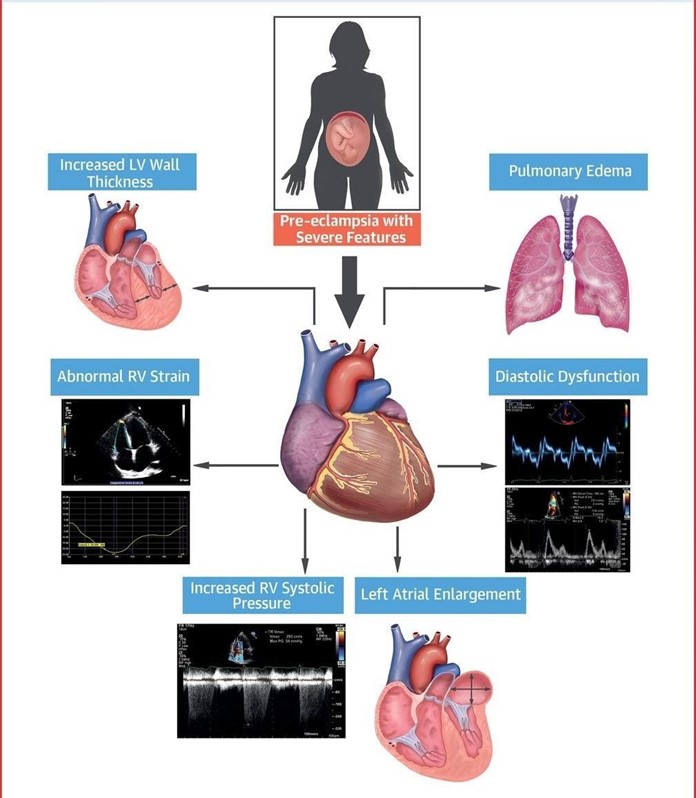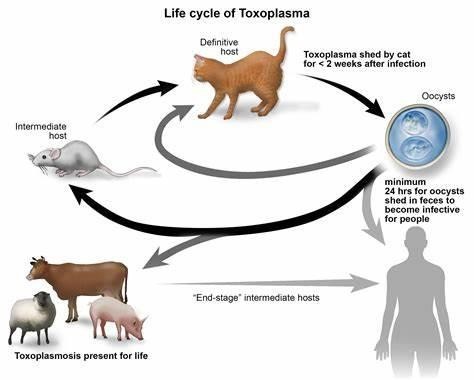A nurse on the obstetric unit is caring for a client who experienced abruptio placentae. The nurse observes petechiae and bleeding around the IV access site. The nurse should recognize that this client is at risk for which of the following complications?
Preeclampsia
Anaphylactoid syndrome of pregnancy
Disseminated intravascular coagulation
Puerperal infection
The Correct Answer is C
Choice A: This is incorrect because preeclampsia is a condition characterized by hypertension, proteinuria, and edema that occurs after 20 weeks of gestation. It is not related to abruptio placentae, which is the premature separation of the placenta from the uterine wall. Preeclampsia does not cause petechiae or bleeding around the IV site, but it may cause headache, blurred vision, epigastric pain, or seizures.
Choice B: This is incorrect because anaphylactoid syndrome of pregnancy, also known as amniotic fluid embolism, is a rare and life-threatening complication that occurs when amniotic fluid enters the maternal circulation and triggers an allergic reaction. It is not related to abruptio placentae, but it may occur during labor, delivery, or shortly after birth. Anaphylactoid syndrome of pregnancy does not cause petechiae or bleeding around the IV site, but it may cause respiratory distress, hypotension, cardiac arrest, or disseminated intravascular coagulation.
Choice C: This is the correct answer because disseminated intravascular coagulation (DIC) is a condition in which the blood clotting system is activated abnormally, leading to excessive clot formation and consumption of clotting factors and platelets. This results in bleeding from various sites, such as the IV site, gums, nose, or vagina. DIC is a common complication of abruptio placentae, as the release of thromboplastin from the placenta triggers the clotting cascade. DIC can also cause organ failure, shock, or death if not treated promptly.
Choice D: This is incorrect because puerperal infection, also known as postpartum infection, is a bacterial infection that affects the uterus, vagina, bladder, or wound site after childbirth. It is not related to abruptio placentae, but it may occur due to prolonged labor, cesarean delivery, retained placenta, or poor hygiene. Puerperal infection does not cause petechiae or bleeding around the IV site, but it may cause fever, malaise, foul-smelling lochia, or pelvic pain.

Nursing Test Bank
Naxlex Comprehensive Predictor Exams
Related Questions
Correct Answer is B
Explanation
Choice A) Antihypertensive: This is not the correct classification of magnesium sulfate. Antihypertensives are drugs that lower blood pressure, such as beta blockers, calcium channel blockers, or angiotensin-converting enzyme inhibitors. Magnesium sulfate does not have a significant effect on blood pressure, and it is not used as a primary treatment for hypertension in preeclampsia.
Choice B) Anticonvulsant: This is the correct classification of magnesium sulfate. Anticonvulsants are drugs that prevent or reduce the frequency and severity of seizures, such as phenytoin, valproic acid, or carbamazepine.
Magnesium sulfate is used as a prophylactic and therapeutic agent for eclampsia, which is a life-threatening complication of preeclampsia characterized by seizures. Magnesium sulfate acts by blocking the neuromuscular transmission and reducing the cerebral edema and vasospasm.
Choice C) Tocolytic: This is not the correct classification of magnesium sulfate. Tocolytics are drugs that inhibit uterine contractions and delay preterm labor, such as terbutaline, nifedipine, or indomethacin. Magnesium sulfate is not effective as a tocolytic agent, and it is not recommended for this purpose by the American College of Obstetricians and Gynecologists.
Choice D) Diuretic: This is not the correct classification of magnesium sulfate. Diuretics are drugs that increase urine output and reduce fluid retention, such as furosemide, hydrochlorothiazide, or spironolactone. Magnesium sulfate does not have a diuretic effect, and it can cause fluid overload and pulmonary edema if administered in excess.

Correct Answer is A
Explanation
Choice a) I will be certain to empty the litter boxes regularly is incorrect because this is a risky behavior for a pregnant woman who wants to prevent toxoplasmosis. Toxoplasmosis is an infection caused by a parasite called Toxoplasma gondii, which can be found in the feces of cats and other animals. If a pregnant woman gets infected with toxoplasmosis, she can pass it to her unborn baby, which can cause serious problems such as miscarriage, stillbirth, or birth defects. Therefore, a pregnant woman should avoid contact with cat litter and let someone else handle the litter boxes, or wear gloves and wash her hands thoroughly if she has to do it herself.
Choice b) I have to wash all of my fruits and vegetables is correct because this is a good practice for a pregnant woman who wants to prevent toxoplasmosis. Toxoplasmosis can also be transmitted through contaminated soil or water, which can adhere to fruits and vegetables. Therefore, a pregnant woman should wash all of her fruits and vegetables before eating them, and peel or cook them if possible, to remove any traces of the parasite.
Choice c) I won't eat raw eggs is correct because this is another good practice for a pregnant woman who wants to prevent toxoplasmosis. Toxoplasmosis can also be acquired through eating undercooked or raw meat or eggs that contain the parasite. Therefore, a pregnant woman should avoid eating raw eggs or any foods that contain them, such as mayonnaise, mousse, or homemade ice cream, and cook all of her meat and eggs thoroughly until they are no longer pink or runny.
Choice d) I need to be cautious when cooking meat is correct because this is also an important practice for a pregnant woman who wants to prevent toxoplasmosis. Toxoplasmosis can also be spread through handling raw meat that contains the parasite. Therefore, a pregnant woman should be careful when cooking meat and use separate utensils and cutting boards for raw and cooked meat, wash her hands and surfaces after touching raw meat, and avoid tasting raw meat while cooking it.

Whether you are a student looking to ace your exams or a practicing nurse seeking to enhance your expertise , our nursing education contents will empower you with the confidence and competence to make a difference in the lives of patients and become a respected leader in the healthcare field.
Visit Naxlex, invest in your future and unlock endless possibilities with our unparalleled nursing education contents today
Report Wrong Answer on the Current Question
Do you disagree with the answer? If yes, what is your expected answer? Explain.
Kindly be descriptive with the issue you are facing.
